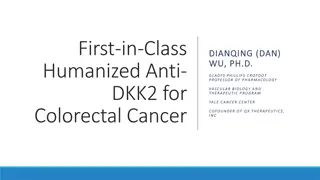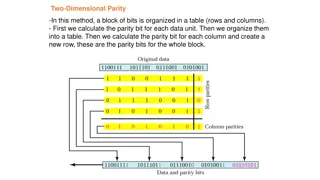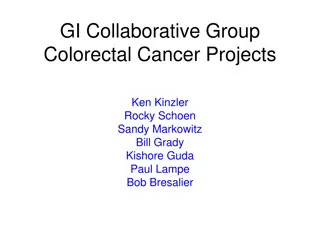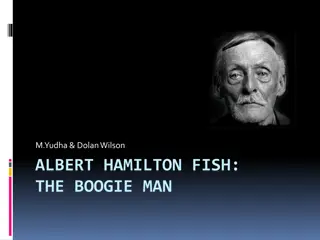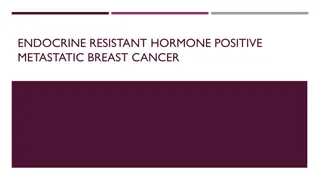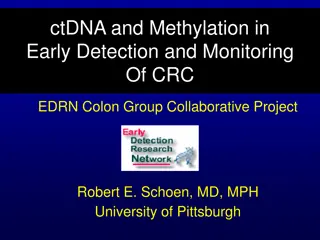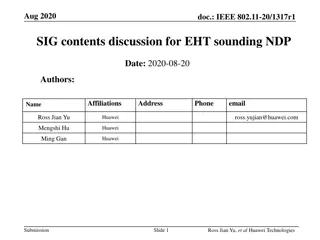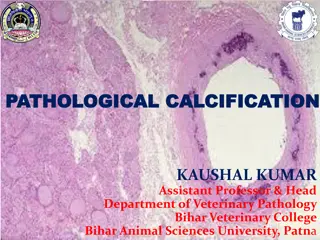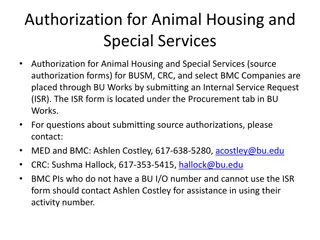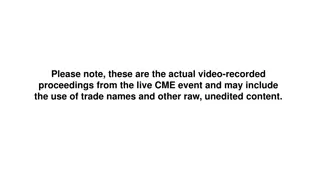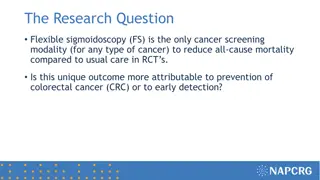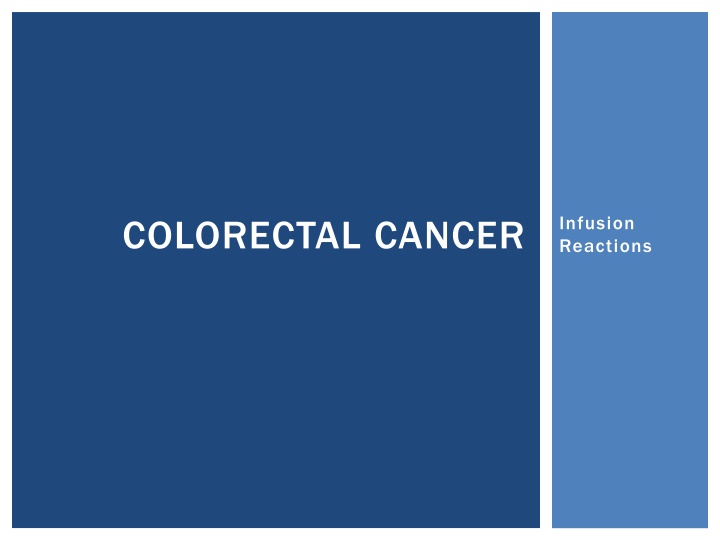
Albert's Journey with Metastatic Colorectal Cancer and FOLFOX6 Regimen
Albert, an 83-year-old retired fashion designer and entrepreneur, is undergoing C6 chemotherapy with the FOLFOX6 regimen for metastatic colorectal cancer with liver involvement. Despite side effects like fatigue and bowel symptoms, he has shown good response to treatment. Follow his story as he navigates through infusion reactions, chemotherapy sessions, past medical history, and social adjustments, all while maintaining strength and receiving support from his family.
Uploaded on | 1 Views
Download Presentation

Please find below an Image/Link to download the presentation.
The content on the website is provided AS IS for your information and personal use only. It may not be sold, licensed, or shared on other websites without obtaining consent from the author. If you encounter any issues during the download, it is possible that the publisher has removed the file from their server.
You are allowed to download the files provided on this website for personal or commercial use, subject to the condition that they are used lawfully. All files are the property of their respective owners.
The content on the website is provided AS IS for your information and personal use only. It may not be sold, licensed, or shared on other websites without obtaining consent from the author.
E N D
Presentation Transcript
COLORECTAL CANCER Infusion Reactions
INTRODUCTION Albert, 83M Retired fashion designer and entrepreneur Presented to Cabrini Brighton for C6 chemotherapy Metastatic CRC with liver met FOLFOX6 regimen with good effect
HOPC Nov 2014 U/S and CT-CAP revealed extensive metastatic disease involving entire liver Suspected to be secondary to a previously resected sigmoid polyps Initial presentation Persistent nausea, anorexia and generalised weakness Bowel symptoms of constipation Weight loss 5kg Denied symptoms of liver disease Deranged LFT
HOPC Hx of colonic polyps Routine colonoscopy for many years Dec 2012 Polypectomy with histopathology revealing adenocarcinoma Follow-up CT showed no evidence of nodal or distant metastasis Follow-up colonoscopy all clear
HOPC Referral to A/Prof. Gary Richardson Work-up PET scan bowel and liver involvement Tumour markers CEA and CA19-9 Liver core biopsy moderately differentiated adenocarcinoma Colonoscopy + biopsy recurrent adenocarcinoma CRC grade IVA
CHEMOTHERAPY FOLFOX6 regimen Oxaliplatin, Leucovorin, 5FU, Bevacizumab Serum CEA LFTs Side effects Fatigue exercise tolerance and sleep Bowel symptoms GORD Infusion reaction Weight stable Hypertension well controlled Nil other significant chemo toxicity
PAST MEDICAL HISTORY Ongoing issues Hyperlipidaemia on Lipitor IHD and hypertension on Coversyl and Tenormin Inactive issues Gout on prophylactic allopurinol AF asymptomatic since 1999 Meningioma excised in 1997 NKDA
SOCIAL HISTORY Lives at home with wife Breast cancer Previously IADL Golfed twice weekly, walked 18 holes Cleaner fortnightly Currently more fatigable Golf once a week, requires buggy Still gardens One daughter Lives nearby and helps
SUMMARY Albert 83M Currently C6 of FOLFOX6 regimen for metastatic CRC with liver met Has been progressing well on treatment with decline in serum CEA and improvement in LFTs Has had relatively minor side effects from chemo But most recently had an infusion reaction that settled with anti- histamines, and since have had oxaliplatin removed from regimen
ISSUES 1. Metastatic CRC with liver met Chemotherapy and post-chemo management 2. Medical management of IHD 3. Decline in function and exercise tolerance EP and OT assessment 4. Social issues Age Assistance with ADL
INFUSION REACTION Definition An unexpected reaction that cannot be explained by the known toxicity profile of the drug Virtually all chemotherapeutic agents have the potential to initiate an infusion reaction
SIGNS AND SYPMTOMS Standard Infusion Reactions (SIRS) Cutaneous Flushing, itching, urticaria angioedema Respiratory Cough, nasal congestion, SOB, chest tightness, wheeze, hypoxia Cardiovascular Dizziness or syncope, tachycardia, hypotension, hypertension Gastrointestinal N/V, abdo pain and diarrhoea Neuromuscular Sense of impending doom, tunnel vision, dizziness, seizures, severe back/chest/pelvic pain Anaphylaxis if more severe
TIMING AND RISK FACTORS Usually occurs during or within a few hours of drug infusion Occasionally one to two days after administration Infusion reactions found to be more common in these settings IV administration After multiple cycles of certain agents Prior infusion reactions to drug of same chemical class History of multiple drug allergies
COMMONLY IMPLICATED AGENTS Taxanes Platinum Doxorubicin L-asparaginase Procarbazine Etoposide Bleomycin Cytarabine Ixabepilone
MANAGEMENT OF SIR Immediate Symptomatic management resuscitation Rechallenge Reduced infusion rate Premedication Desensitisation techniques
OXALIPLATIN AND PLATINUM DRUGS Classic type 1 IgE-mediated allergic reaction Characterised by Pruritus, urticaria, bronchospasm, facial swelling and hypotension Abdominal pain, nausea, vomiting and diarrhoea are also relatively common in platinum drug-induced anaphylaxis One study of 272 patients receiving oxaliplatin found 48 (18%)patients who developed infusion reaction despite prevention regimen of famotidine and dexamethasone3 Another study suggested benefit from higher doses of dexamethasone in conjunction with H1 and H2 receptor blockers (7% vs. 20% reaction rate)




